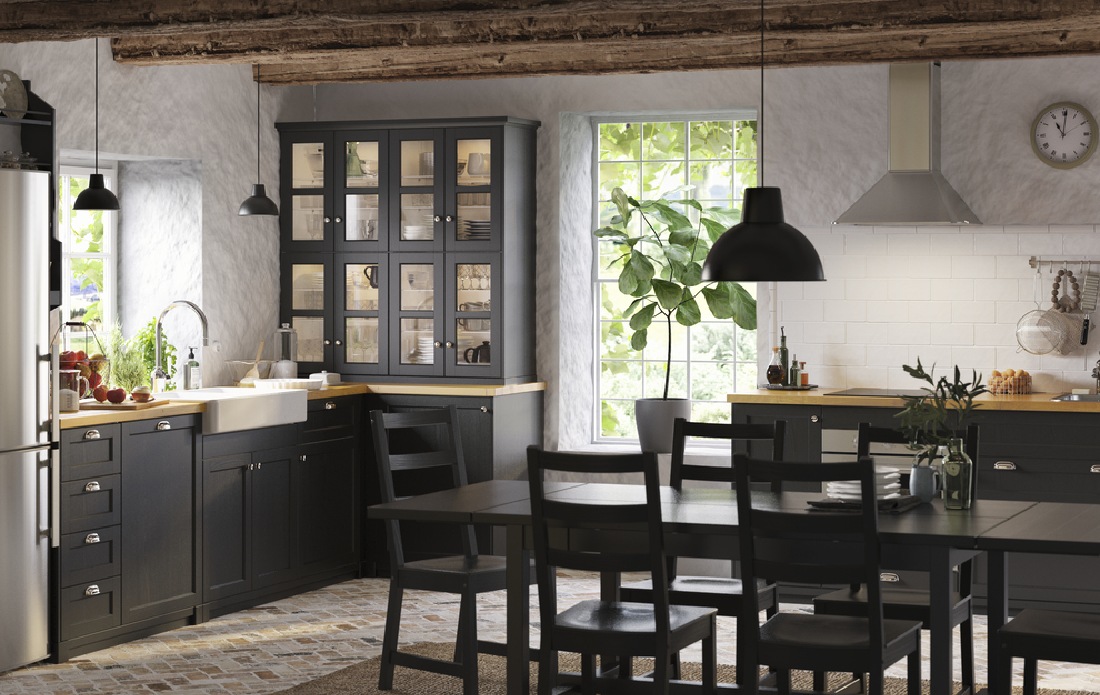Creating a comfortable, functional, and aesthetically pleasing home is a dream for many. One increasingly popular design style is Scandinavian, which prioritizes simplicity and a balance between aesthetics and functionality.
With the right interior choices, this design can create a bright, tidy, and spacious-looking space.
If you want to bring the Scandinavian home ambiance into your living space, check out this discussion on its main concepts, characteristics, and easy ways to adapt it!
What is the Scandinavian Style?
First, let’s get to know Scandinavian homes, often found in Nordic countries. The Scandinavian design style originated from Nordic culture, which emphasizes a simpler, cozier, and more functional way of life.
This philosophy is reflected in interior design, which prioritizes natural elements, maximum lighting, and a clean, organized space.
Read also: Scandinavian interior design: functionality for a more comfortable home
Key concepts of Scandinavian design
Here are some key concepts that characterize Scandinavian design:
- Use of Neutral Colors and Natural Materials: White, gray, and beige dominate, combined with natural wood elements to create a warm and calming atmosphere.
- Emphasis on Natural Lighting: This design maximizes sunlight with large windows and sheer curtains, creating a brighter and more open ambiance.
- Minimalist Yet Functional Spaces: Furniture and decor are carefully selected to ensure every element has a clear function without feeling excessive.
Key characteristics of Scandinavian home design
Scandinavian design is not just about aesthetics but also about comfort and space efficiency. The combination of minimalistic aesthetics and functionality below will make your home feel more spacious, tidy, and comfortable.
- Neutral and Light Colors as the Main Elements: White, gray, cream, and light wood accents form the base of this design. This color combination creates a clean, spacious, and calming atmosphere.
- Natural and Eco-Friendly Materials: Materials such as wood, rattan, linen, and cotton provide a natural impression that aligns with the Scandinavian concept while creating a healthier environment.
- Maximum Natural Lighting: Scandinavian homes are designed to capture as much natural light as possible. Large windows and sheer curtains help distribute light throughout the room.
- Open Spaces with Minimal Partitions: This design often connects the kitchen, dining area, and living room in one open space, creating a more expansive and interactive feel.
- Simple Yet Multifunctional Furniture: The concept of "lagom," meaning just right and not excessive, is applied in furniture selection. Tables, chairs, and beds often have additional functions to optimize space.
Advantages of Scandinavian home design for modern living
Adopting the Scandinavian style in modern homes offers many benefits, especially in creating a more serene and functional atmosphere. Here are the characteristics of a minimalist home with a Scandinavian-style concept.
Maximizing small spaces to feel larger
Scandinavian design is ideal for homes with limited space because it prioritizes efficiency. Utilizing minimalist furniture with wooden materials and multifunctional designs—such as foldable tables and storage beds from IKEA—helps you save space.
Additionally, using wall shelves and hidden storage keeps rooms tidy without feeling cramped.
More energy efficient with natural lighting
One of the main advantages of this design is its optimal natural lighting. Large windows with sheer curtains allow maximum sunlight to enter, reducing the need for artificial lighting during the day.
Using light color palettes on walls and furniture also helps reflect light, making the room feel more spacious and bright.
These colors not only make the home more energy-efficient but also create a healthier and more comfortable atmosphere.
Easy to blend with various styles
The Scandinavian style is highly flexible and can be combined with various other design concepts. You can pair it with a sleek modern Scandinavian style with a minimalist design.
Additionally, a boho Scandinavian design with decorative elements such as textiles works well with indoor plants.
Another reference is the Japandi design, which blends Japanese simplicity with Scandinavian warmth. With the right combination, you can create a more personal interior look that suits your taste.
Suitable for eco-friendly homes
Many elements in Scandinavian design support an eco-friendly concept. Using natural materials like recycled wood and rattan not only enhances aesthetics but also reduces environmental impact.
Additionally, sustainable furniture made from eco-friendly materials is increasingly available, making this design a more eco-friendly choice for those who care about sustainability.
Decoration and furniture tips for the Scandinavian style


